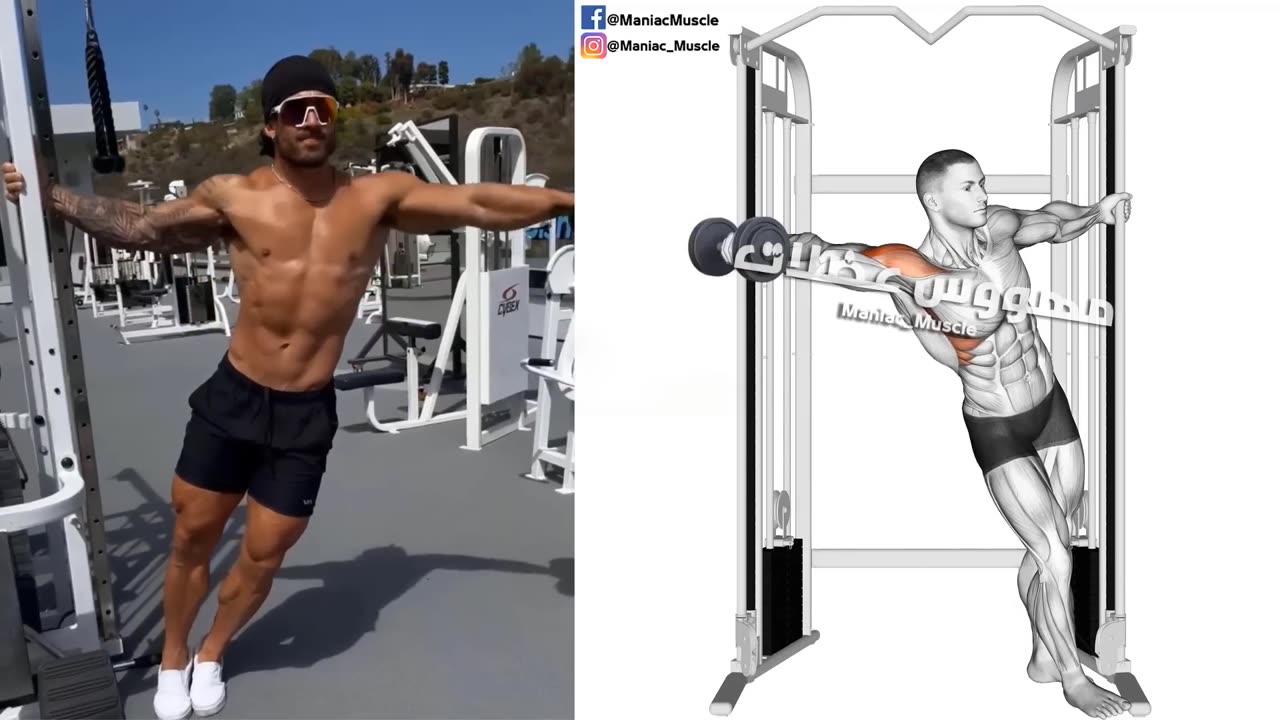Premium Only Content

UPPER BODY WORKOUT WITH DUMBBELLS (Shoulder-forearms-chest-triceps-back-biceps)
An upper body workout with dumbbells is an effective and versatile routine designed to target various muscle groups in the upper portion of your body. This workout can help you build strength, increase muscle tone, and enhance overall upper body aesthetics. The routine focuses on the following muscle groups: shoulders, forearms, chest, triceps, back, and biceps. Here's a brief description of each component of the workout:
Shoulders: Perform exercises like dumbbell shoulder presses, lateral raises, and front raises to target the deltoid muscles. These exercises help build broader and well-defined shoulders.
Forearms: Engage your forearms with wrist curls and reverse wrist curls using dumbbells. These exercises enhance grip strength and forearm muscle development.
Chest: Incorporate dumbbell bench presses, incline presses, and flyes to effectively target the pectoral muscles. These movements contribute to a stronger and more sculpted chest.
Triceps: Execute triceps exercises such as dumbbell triceps extensions (skull crushers), triceps kickbacks, and overhead triceps extensions. These movements contribute to the development of the back of your arms.
Back: Work your back muscles with dumbbell rows, bent-over rows, and single-arm rows. These exercises target the lats, rhomboids, and upper back muscles, promoting a well-balanced and strong back.
Biceps: Engage your biceps with dumbbell curls, hammer curls, and concentration curls. These exercises help develop the front of your upper arms and contribute to the coveted "bicep peak."
To create an effective upper body workout with dumbbells, consider selecting 2-3 exercises for each muscle group and performing 3-4 sets of 8-12 repetitions for each exercise. Make sure to choose weights that challenge you but still allow you to maintain proper form throughout each set. Remember to warm up before the workout and cool down afterwards, and always prioritize safety and proper technique to prevent injury.
Before starting any new workout routine, especially if you're new to exercise or have any pre-existing health conditions, it's recommended to consult a fitness professional or healthcare provider to ensure the routine is appropriate for your individual needs and goals.
-
 3:22:30
3:22:30
Laura Loomer
7 hours agoEP141: Muslims Call For Political Assassinations At Michigan Palestinian Conference
40.1K25 -
 4:39:32
4:39:32
Barry Cunningham
8 hours agoBREAKING NEWS: PRESIDENT TRUMP IS GOING TO TAKE CHICAGO! LFG!!! (IT'S MOVIE NIGHT!)
85.5K62 -
 1:23:59
1:23:59
Man in America
9 hours agoTrump Demands Big Pharma Come Clean on Covid Shots w/ Dr. David Martin
43.5K30 -
 1:40:27
1:40:27
megimu32
5 hours agoOTS: Labor Day Sitcom Blowout - Tim, Ray, & Relatable Chaos!
36.6K5 -
 4:09:30
4:09:30
StevieTLIVE
5 hours agoWarzone Wins w/ FL Mullet Man
32.1K1 -
 1:04:01
1:04:01
BonginoReport
9 hours agoLefties Wish Death on Trump but He’s BACK! - Nightly Scroll w/ Hayley Caronia (Ep.125)
189K83 -
 3:18:28
3:18:28
Tundra Tactical
6 hours ago $3.49 earnedWe Survived the Military… But Not This Basement
35K -
 20:12
20:12
Clownfish TV
14 hours agoDisney Needs MEN Back?! They ADMIT Star Wars and Marvel are DEAD!
28.3K40 -
 1:37:00
1:37:00
Anthony Rogers
13 hours agoEpisode 381 - Tim Kelleher
19K1 -
 1:01:42
1:01:42
The Nick DiPaolo Show Channel
10 hours agoTDS Hits New Level! | The Nick Di Paolo Show #1786
55K40